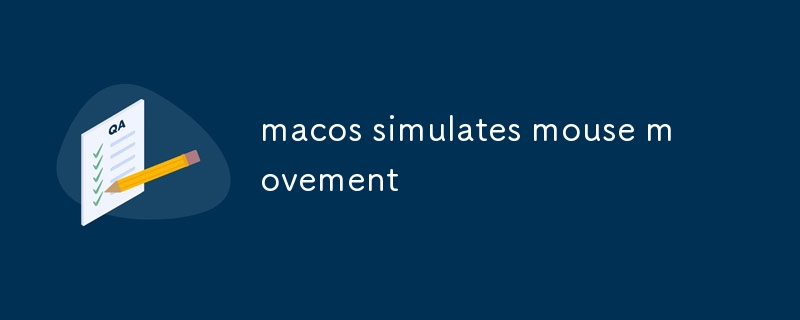この記事では、コード、AppleScript、Automator を使用して macOS でカーソルの動きを制御し、マウス操作を自動化するさまざまな方法について説明します。正確なカーソル制御のために CGEventCreateMouseEvent 関数を使用する方法を説明し、例を示します

コードを使用して macOS でカーソルの動きを制御する方法は複数あります。 1 つのアプローチには、Core Graphics フレームワークの CGEventCreateMouseEvent 関数を使用することが含まれます。この関数を使用すると、カーソル位置、ボタンの状態、タイムスタンプなどの指定された属性を持つマウス イベントを作成できます。その後、CGEventPost 関数を使用してイベントをシステムに送信できます。CGEventCreateMouseEvent function from the Core Graphics framework. This function allows you to create a mouse event with specified attributes, such as the cursor position, button state, and timestamp. You can then use the CGEventPost function to send the event to the system.
Here's an example of how to use CGEventCreateMouseEvent and CGEventPost
CGEventCreateMouseEvent と CGEventPost を使用して移動する方法の例を次に示します。カーソルを画面上の特定の点に移動します:<code>#include <CoreGraphics/CoreGraphics.h>
int main() {
// Create a mouse event with the desired cursor position
CGPoint cursorPosition = CGPointMake(100, 100);
CGEventType eventType = kCGEventMouseMoved;
CGMouseButton button = kCGMouseButtonLeft;
CGEventRef event = CGEventCreateMouseEvent(NULL, eventType, cursorPosition, button);
// Post the event to the system
CGEventPost(kCGHIDEventTap, event);
// Release the event
CFRelease(event);
return 0;
}</code><code>tell application "System Events"
set theX to 100
set theY to 100
set mousePos to {theX, theY}
set frontWindow to window 1 of process "Finder"
set mouseLoc to mouse loc of frontWindow
set mouseLoc to mousePos
end tell</code>以上がmacos はマウスの動きをシミュレートしますの詳細内容です。詳細については、PHP 中国語 Web サイトの他の関連記事を参照してください。